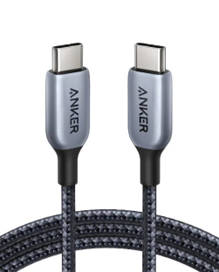Data cable connectors have evolved in today's ever-evolving technological scene, with USB-C (USB Type-C) ports becoming the de facto norm. USB-C is becoming the standard data transfer and charging interface for a growing range of electronic devices, including laptops, tablets, and smartphones. This style meets consumer demands for consistency, efficiency, and convenience while highlighting technology breakthroughs. This article explores the factors that led to the transition of data cables to USB-C ports, emphasizing the need for usb a to usb c converters.

Advantages of USB-C Ports
A Unified Interface Standard
USB-C ports revolutionized the landscape by introducing a uniform, compact, and reversible connector that eliminates the incompatibility issues associated with the myriad of USB interfaces preceding it, such as USB-A, USB-B, Mini USB, and Micro USB. The adoption of USB-C simplifies users' lives by eliminating the need for multiple cables and adapters, thereby reducing costs and waste.
High-Speed Data Transfer Capabilities
USB-C ports support USB 3.1 and higher specifications, offering a theoretical bandwidth of up to 10 Gbps—five times faster than USB 2.0 and twice as fast as USB 3.0. This significant increase in data transfer speed caters to users' demands for swift transmission of high-definition videos, large files, and more.
Powerful Charging Capabilities
USB-C ports are equipped with USB Power Delivery (USB PD) technology, enabling them to deliver up to 100W of power output. This robust charging capability is sufficient for powering laptops and other high-power devices. Furthermore, USB PD supports bidirectional power, allowing devices to receive and supply power and fostering more flexible and efficient energy management. This meets the needs of the rapid development trend.
Integrated multi-functionality
USB-C ports boast integrated multi-functionality, enabling them to handle not just data transfer and charging but also video output, audio transmission, and more. Users can seamlessly connect their smartphones, tablets, and other devices to monitors, projectors, and other peripherals for high-definition video viewing. This versatility significantly enhances device usability and convenience. Suitable for the requirements of convenient development.
Necessity of USB-A to USB-C Conversion
Despite USB-C's widespread adoption, many devices, particularly older ones like some computers, printers, and keyboards, still utilize USB-A ports. This incompatibility poses challenges for users seeking to connect new USB-C devices. As such, the need for USB-A to USB-C converters arises.
Compatibility Demands
With USB-C gaining popularity, new devices increasingly adopt this interface standard. However, the prevalence of USB-A ports on existing devices necessitates converters or adapters to facilitate connections between old and new devices. While these converters might add to costs and complexity, they ensure compatibility and maintain functionality.
Portability Requirements
Portability is a crucial factor influencing users' device choices. Traditional USB-A cables are often bulkier and less portable than USB-C cables. By converting USB-A to USB-C, users can reduce the number of cables they carry, simplifying their travel kits and enhancing convenience.

Future Trends
Looking ahead, USB-C is poised to become the dominant data transfer and charging interface standard. Technological advancements and market adoption will continue to propel its prevalence. Therefore, investing in USB-A to USB-C converters not only addresses current needs but also aligns with future trends, ensuring users' devices remain relevant and compatible.
Conclusion
USB-C ports, with their unified design, high-speed capabilities, powerful charging, and integrated multi-functionality, are poised to revolutionize the data cable landscape. The transition from USB-A to USB-C, facilitated by converters and adapters, addresses compatibility concerns, enhances portability, and embraces future trends. As such, it is evident that USB-C will gradually supplant USB-A as the market's preferred choice, marking a new era of convenience and efficiency in data transfer and charging.
